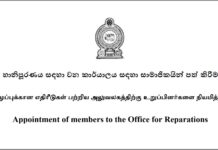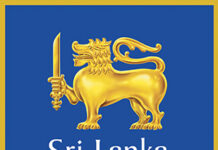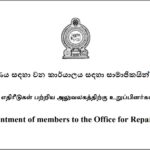Finally, thinking that further attempts to fight the British, would only result in the
death of the Sinhalese troops, Keppetipola Disawa disbanded his rebellious army,
and made his way towards Anuradhapura, hoping to launch another offensive, at a
later date. However, when news reached D’Oyly that Keppetipola Disawa had taken refuge at a place in Nuwarakalaviya, he immediately despatched Capt. O’Neil to arrest him and produce him before Col, Kelly .Without fear or favour, he impatiently awaited the arrival of the troops under Capt. O’Neil.
When he saw the captain Ceremonial cap of the Dissave coming to arrest him, without the least hesitation, he went to meet him, shook hands with him and identified himself by saying “I’m Keppetipola”. His words were firm and clear and his vibrant voice showed his courage. Capt. O’Neil was surprised to have confronted with the man he was searching for, in a peaceful manner and without the least resistance, which was unusual for a man who hated the British. Keppetipola was brought to Kandy under escort and produced before Col. Kelly to be tried for high treason.
After trial, he was found guilty against the charges framed. On Nov. 26, 1818, he
was taken to be executed followed by two royal executioners, carrying their lethal
weapons over their shoulders. It is said that Keppetipola Disawa “walked languidly,
without any signs of regret or fear, as a brave man ready to face death for good and
valid reasons”.
At the execution grounds, “Keppetipola Disawa rose to his feet, as a brave patriot,
and looking at the executioner Iriyagama Kankanama, said that he should give only
one blow at his neck and not two. So, saying the Disawa asked for the sword from
the executioner and checked its sharpness.” Thereafter, he had tied his long hair
into a knot over his head and made his neck clear to receive the sword.
Keppettipola was arrested at Nuwara Kalaviya, Anuradhapura in October 1818.
Following his arrest and that of his lieutenant Madugalle, both were tried by a Court
Martial on November 13 and sentenced to death on November 26, 1818. Both of
them were beheaded. Altogether, the death penalty was imposed on 29 rebel
leaders. Ihagama, once a bhikku, was the guiding force behind the rebellion that
Keppettipola led.
The London Times of October 7, 1818, reported: “the plan of destroying all the
grain and fruit trees in the neighborhood of Badulla seems to have been completely
carried into effect, a dreadful measure.” Justice Lawrie, Senior Puisne Judge in colonial Ceylon in A Gazetteer of the Central Province of Ceylon wrote: “… The story of English rule in the Kandyan country during 1817 and 1818 cannot be related without shame. In 1819 hardly a member of the leading families, the heads of the people, remained alive; those whom the sword and the gun had spared, cholera and smallpox and privations had slain by the hundred.” (Revolt in the Temple ) The then British Deputy Inspector General of Hospitals in Sri Lanka Henry Marshall was sympathetic to Keppettipola and visited him in prison on several occasions.
To Marshall (a Scotsman) Keppettipola was like the Scottish Freedom Fighter, Sir
William Wallace, whom the English executed in 1306 for `treason’ after he rebelled
against King Edward I. Dr. Henry Marshall, Medical Officer and Deputy Inspector of the Services Hospital, who knew the Disawa well, as a great man who was brave, forward, and
courageous, with qualities not generally found among men. With due respect to the deceased, Dr. Marshall took his skull to England to be placed at the Phrenological Society in Edinburgh where skulls of great men are kept preserved in honour of the dead. The skull was returned to the island in 1954, at the request of the Sri Lanka government.
[Compiled from articles by Karaliyadde, Janaka Perera in the Daily News of 28 Nov 2007and












